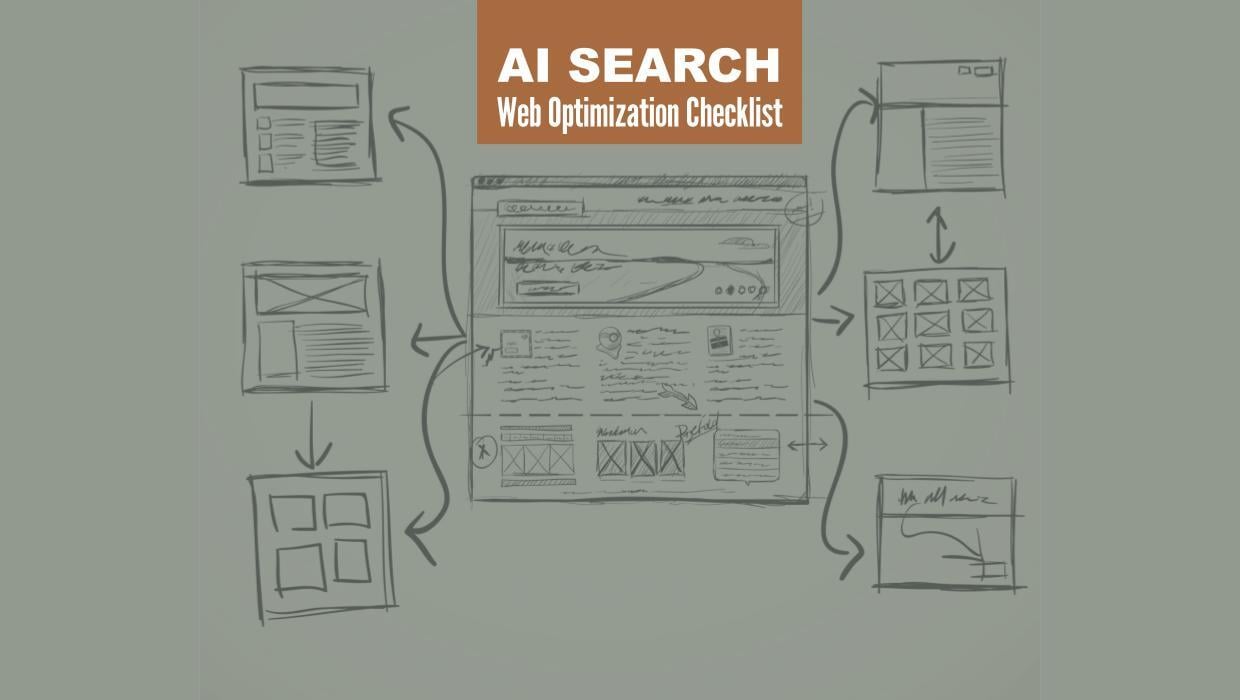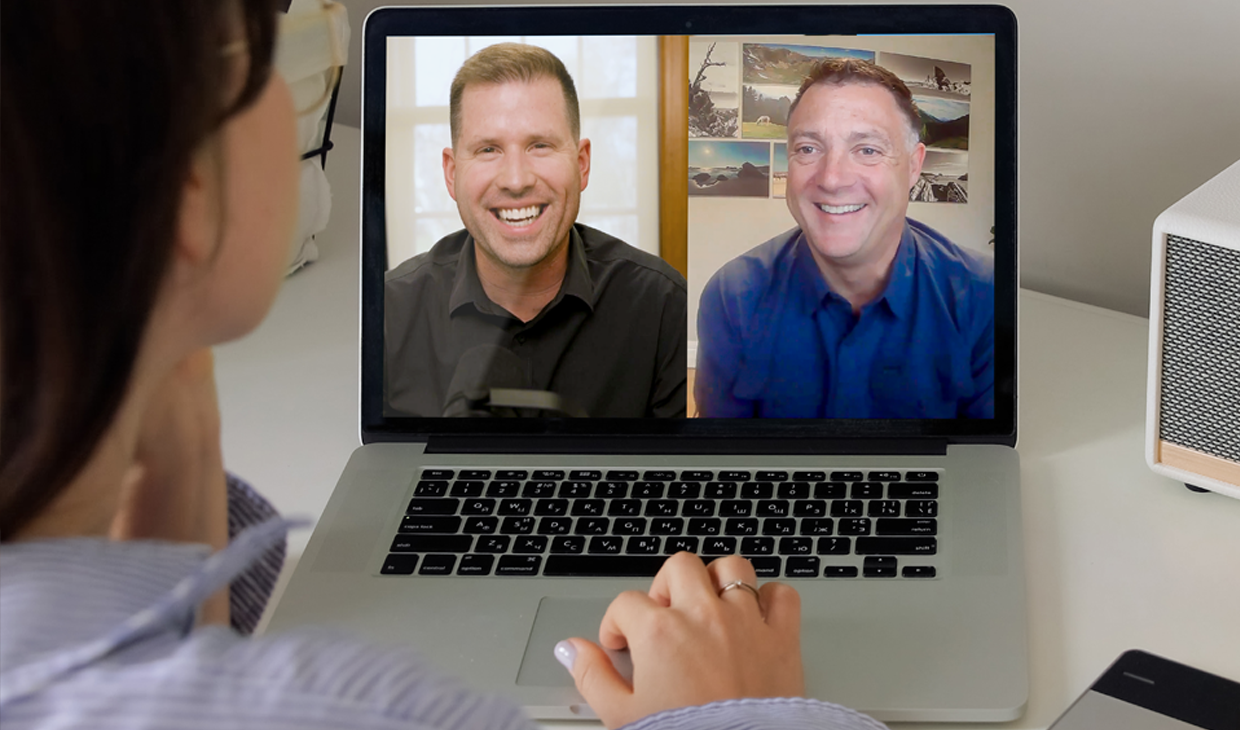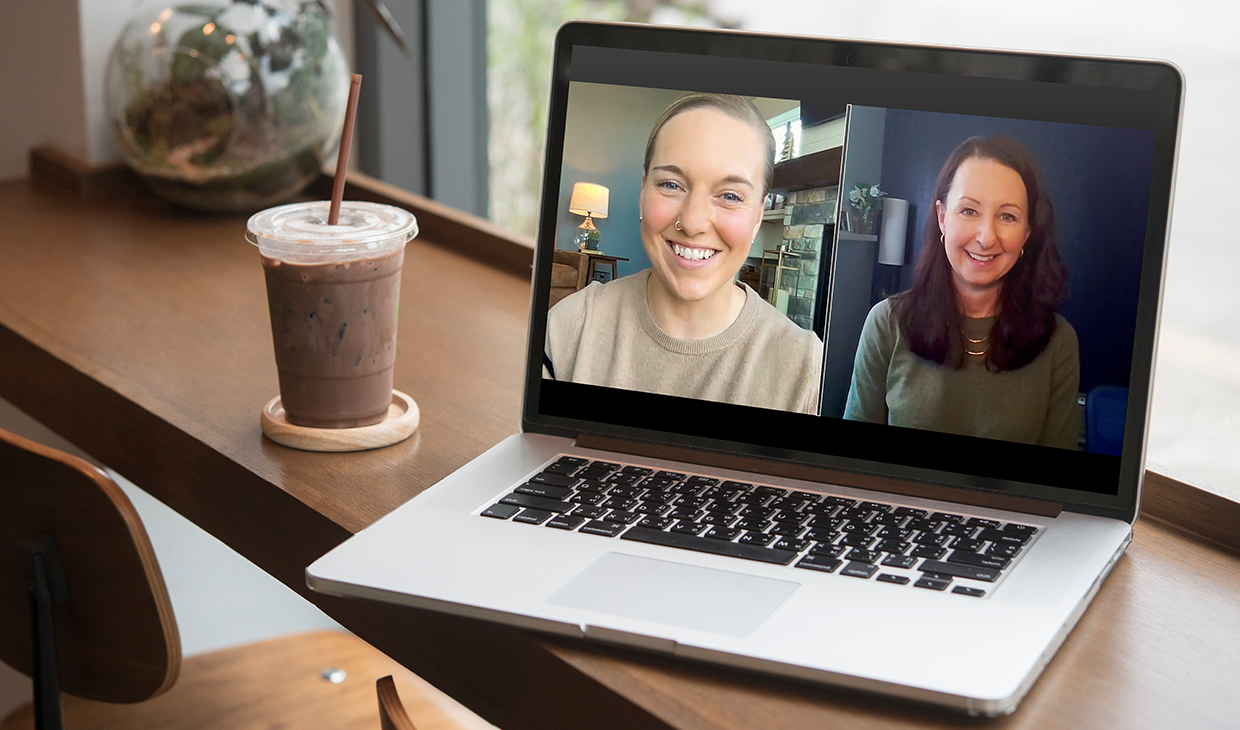AI, SMEs, and the 2025 Content Shift: A Conversation Worth Having
Written by
Remember when marketers humble-bragged about hitting “publish” four times a week… even if it meant green-lighting posts just to keep the ed cal full?
The algorithm may have loved that churn back in 2015, but not so today. Thin, copycat content is the digital equivalent of styrofoam: cheap and fills a space, but doesn’t stand the test of time.
Right now, smart industrial marketers are flipping the script, swapping quantity for quality: one deeply researched, SME‑driven “pillar” as a major content investment, supported by a halo of multichannel micro‑content that keeps that pillar shining.
That’s the central theme of The ChangeOver Podcast minisode, a snack-size remix of Chelsea and Jo’s full‑length episode on future‑proofing content strategy. If you’re short on time but hungry for action steps, you’re in the right place.
By the end of the minisode, you’ll know:
- Why information gain outranks echo chambers in Google’s E-E-A-T era
- How to turn engineers and service reps into your most believable influencers
- Where AI belongs in the workflow, and where human nuance still wins the day
Catch the conversation right here:
Check out episode 25 of The ChangeOver, then subscribe on Apple, YouTube, Spotify, Weidert.com, or your favorite podcast app.
TL; DR (Get the Gist in 30 Seconds)
Even if you don’t have a few minutes to hit play, skim these takeaways to get up to speed:
- One quarterly flagship, first‑party “pillar” + peripherals beats weekly B-list blog content
- SME voices front‑and‑center help satisfy Google’s added “E” (Experience) and your buyers’ trust radar
- AI is your pattern‑finding, repurposing sidekick… not your ghostwriter
- Quality metrics > quantity metrics. Time‑on‑page and demo requests beat blog‑per‑month counts
Key Insights & Action Steps
1. Information‑Gain or Bust
“If it’s something that AI could spit out on its own, then there’s no point.” — Chelsea Drusch
Google rewards net‑new value. Anchor every pillar in first‑party data, hands‑on lessons, or exclusive SME perspective — otherwise you’re just remixing the internet.
2. SMEs Are Your Hidden Influencer Army
“Nobody wants to see the posts from your logo. They wanna see the posts from your people.” — Jo Phillip
Sales engineers, field techs, and service reps have the stories buyers trust. Give them flexible ways to contribute: recorded interviews, asynchronous chats, or ghost‑written bylines.
3. AI: Power‑Tool, Not People Replacement
“We can use all kinds of tools again to make sure we’re not missing things, to be able to pay closer attention, to ask better follow up questions, because I'm there in that conversation. I'm not, you know, typing notes furiously and trying to keep up. So already it's a better conversation for me right now than it was two years ago.” — Jo Phillip
Use AI to mine CRM tickets for patterns, draft interview guides, and splice your pillar into LinkedIn carousels. Then let humans polish, fact‑check, and protect the brand voice.
4. Metrics That Matter
The content churn is dead. Track:
- Engagement depth (scroll depth, time‑on‑page)
- Qualified form fills / demo requests
- Content‑influenced revenue
If those lift, you’re winning — even at one post every 60 days.
Full Transcript
Chelsea: Welcome back to The ChangeOver podcast. I'm Chelsea Drusch, Strategist and SEO Manager here at Weidert Group, and I am with one of my favorite people today.
Jo: I'm Jo Phillip, and I'm Director of Creative Strategy also at Weidert Group.
Chelsea: Today we are going to dig into one of the most frequently asked questions from our clients lately, which is how should we be doing content strategy in 2025? In the age of AI? So I think one of the big key shifts is going from a little bit more of a quantitative focus to a little bit more of a quality focus, as far as how much you're creating and how much you're putting into every individual piece to create.
So to be real tangible for one second, we're seeing with our clients shift from things like, I blog once a week and I create advanced content once a quarter to I'm creating one to be determined content package once every other month, and I'm creating one core content piece that is very thorough, very well, whether it's researched or it's got lots of first person perspective.
And then from that core piece, we're creating peripheral pieces around it that are repurposed short-form material content that not only gives more life to the big pieces invested in, but helps promote that big piece and drive people back to it as well. But the core piece of content you should never create again, unless it has either direct first-party experience and coach baked in, or first-party research data, or both, because it's not going to be successful without one of those things.
Jo: Right? Because it goes back to that idea of you hear it everywhere, information gain, right? We want to be adding, we want to be additive to what exists already in the world. We're trying to create content that's going to deliver unique value to its users.
Chelsea: And this was written with just research on the internet. And there's no first-person perspective added into it at all. You either need to ditch that or go back in and add stuff because it is something that I could say on its own, then there's no point.
Jo: And I think another thing that we need to really remember is the extra “E” that's been added to E-A-T, and the importance of expertise, and the importance of subject matter experts and those people that you have inside your organization who are so trustworthy and trusted and experienced and really, really know the needs of your customers through experience, through their interactions with them, that, that regard, that respect that those experts have.
That rubs right off on your brand. That's so important. And in, in the context of social media or industry forums, engagement and participation. Nobody wants to see the posts from your logo. They want to see the posts from your people.
Chelsea: And you see that marketing is a team sport. Marketing is not done by the marketing department. Marketing is done by the company. And that is really alluding to your point just now. You know, we need participation from the on the ground experts, from the engineers, from the people who are customer facing on the service team, like you guys are the ones who are actually conversing with, hearing from in real time what matters most right now to the audience we're trying to reach.
That's how we stay relevant.
Jo: It doesn't mean that you're turning your engineering department into a bunch of content writers, right? But their bylines matter and their information matters, and so tapping their brains and regularly checking in with them is going to feed your content. So much more perspective. It's going to help you achieve that thought leadership positioning that is really going to differentiate in those spaces, in those top of funnel spaces.
It's going to help you build your brand there. When it comes to the technical stuff, you just can't do an awesome technical piece without a technical expert. So we always want to interview subject matter experts when we can.
Chelsea: And you're really going to need to work on your team of SMEs. I think that's been one of the biggest challenges as we enact this with our clients, is getting those SMEs comfortable, varying the role they play. Whether, you know, some people want to be on camera, some don't, some want their name on the byline. Some don't like figuring out what your roster of participants looks like from a thought leadership standpoint inside your company, and getting them ready to be a part of this team sport of marketing.
Jo: I think, too, that really close coordination of what's actually in the content is, is new, too. We start with an important concept, but where do we get that concept, right? And we've talked a little bit about this. And people have sources of information that they're not tapping. They have CRM data. They have support tickets. They have sales transcripts.
They could interview customers. They could interview almost-customers who they lost a deal with. Right. Like there are lots and lots of places where you can get information and feedback to really start digging into what's most important to those audiences and what really rises to the top in terms of what their priorities are.
Chelsea: How do we pull ideas out of sales transcripts? How do we pull ideas out of the engineers who are having conversations in R&D? So, how do we run a content ideation workshop on a cadence with those engineers to just pull the ideas out of what they're hearing and learning.
Jo: The scenarios that you're explaining, like, this is where you start to make friends with AI, right? You know, we're talking about pretty vast troves of data, potentially, if you're talking unstructured, right. And so, you want to be you want a tool that's going to be able to help you find patterns.
And you probably couldn't have a better tool than AI to help you dig into that quickly, identify patterns quickly, and identify concerns. And even then, ideate on those. One thing that looks different today for me is my SME interview. Because when it comes to the technical stuff, you just can't do an awesome technical piece without a technical expert.
So, we always want to interview subject matter experts when we can. But that interview looks different for me now. I'm able to prep better using AI tools. I'm able to ask first-level questions to an AI tool, and then develop a really good discussion guide. And then I have an interview with a subject matter expert, which, of course, we do digitally now.
And we record that. And amazing things can happen there because we record, we use transcripts, we can use all kinds of tools again to make sure we’re not missing things, to be able to pay closer attention, to ask better follow-up questions, because I'm there in that conversation. I'm not, you know, typing notes furiously and trying to keep up.
So already it's a better conversation for me right now than it was two years ago. And from there, it's a question of, we start thinking about, what is the format, what does it need to be? And from there, we have to think then about that whole list of peripherals, as you called them, and think about how we're going to make those things.
Now that looks different from how it looked before as well. But again, now using AI tools for repurposing, we're able to get there quicker. We're able to make the tweaks for the different platforms more effectively.
If we're good at using AI, right? If we are strong users of those AI tools that we have.
Chelsea: Yeah. I mean, the use of AI to make the types of things that are required today feasible is incredible. If I’m a writer and I create a piece of content and the only input I’m using, the only raw material I’m using to come up with what goes in that is stuff I researched on the internet…
Jo: Then you're no better than ChatGPT.
Chelsea: Then what are you doing here? Like, that's exactly the type of content that AI is going to cannibalize. So that lends us to say nearly definitively that you should not create another piece of content, the core piece, that the peripherals are a little different story, the micro content. But the core piece of content you should never create again unless it has either direct first-party experience and, quote, baked in, or first-party research data, or both, because it's not going to be successful without one of those.
Jo: Because it goes back to that idea of — you hear it everywhere — information gain, right? We want to be adding, we want to be additive to what exists already in the world. That's what that's what engineering is all about, right? It's about taking what exists and building on it. That's what we're trying to do as well. We're trying to create content that's going to deliver unique value to its users, and that's going to take a little bit of a unique effort.
Your Next 90 Days of Content Strategy
Tomorrow’s top‑ranked resources might be written faster — but they should definitely be written smarter. Anchor your content pillars in lived expertise, let AI handle the heavy lifting on pattern‑finding and repurposing, measure what really matters, and use the insights to inform your next steps in content.
Like what you hear? Hit Subscribe on The ChangeOver Podcast via Spotify, Apple Podcasts, or your player of choice so every new episode — and the tactics that come with it — lands in your feed automatically.
Subscribe To Our Blog
Information. Insights. Ideas. Get notified every time a new Weidert Group blog article is published – subscribe now!
You May Also Like...

Search Engine Optimization
Optimize Your Industrial Website for AI Search

Marketing Technology
Why Unified Data Efforts Fail (and How Manufacturers Can Fix It)

Search Engine Optimization
How Falcon Rebuilt Industrial AI Search Visibility in 2025
Accelerate Your Growth with
Weidert Group
If you’re ready to explore a partnership, request a personalized consultation with our team.

